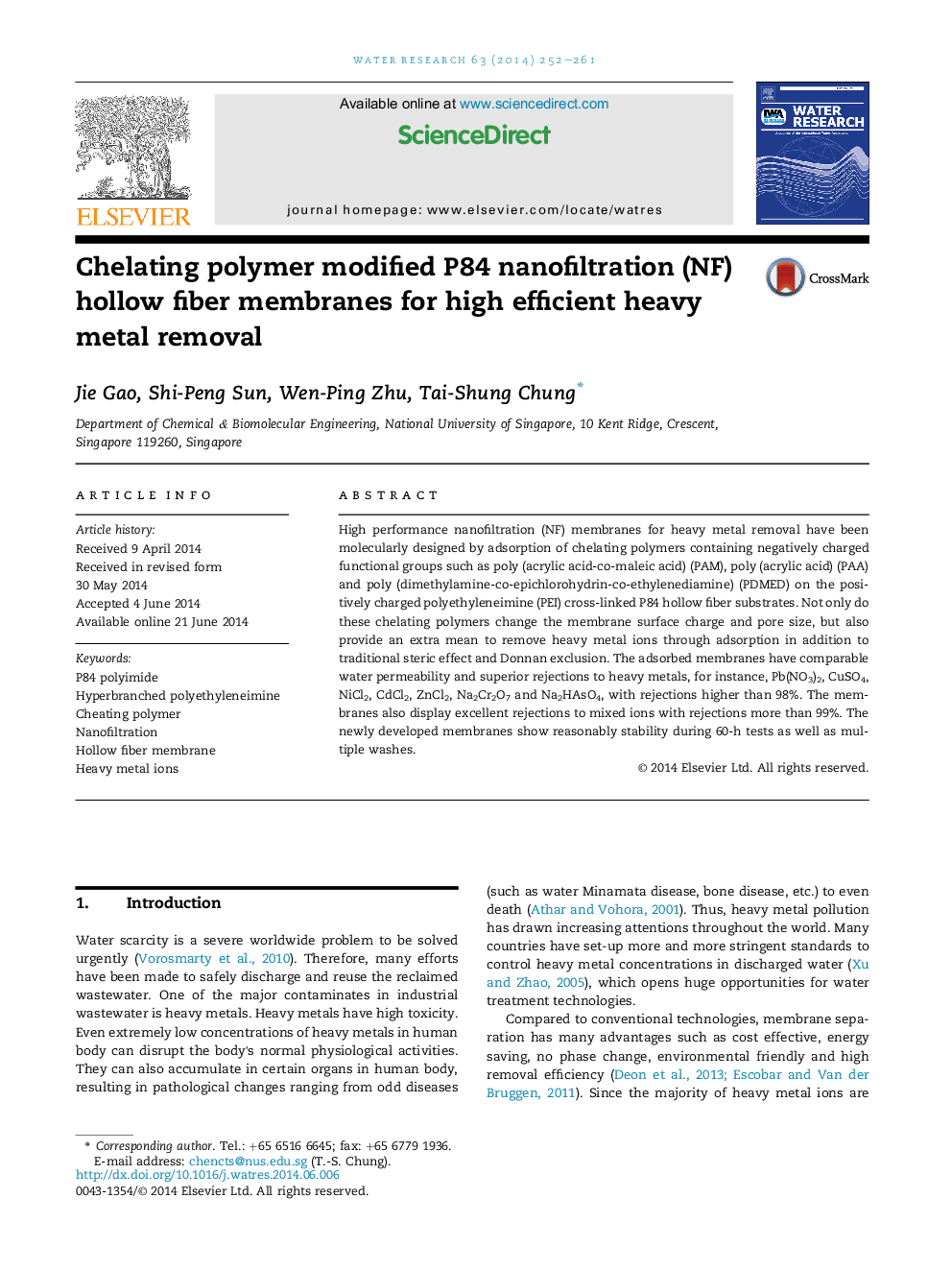| Article ID | Journal | Published Year | Pages | File Type |
|---|---|---|---|---|
| 4481478 | Water Research | 2014 | 10 Pages |
•Chelating polymer is able to adsorb onto the PEI cross-linked P84 membrane.•Chelating polymer adsorption enables removal of heavy metals though adsorption.•The composite membrane is stable for at least 60 h.•It has high rejections to many heavy metals (>98%) with good permeability.
High performance nanofiltration (NF) membranes for heavy metal removal have been molecularly designed by adsorption of chelating polymers containing negatively charged functional groups such as poly (acrylic acid-co-maleic acid) (PAM), poly (acrylic acid) (PAA) and poly (dimethylamine-co-epichlorohydrin-co-ethylenediamine) (PDMED) on the positively charged polyethyleneimine (PEI) cross-linked P84 hollow fiber substrates. Not only do these chelating polymers change the membrane surface charge and pore size, but also provide an extra mean to remove heavy metal ions through adsorption in addition to traditional steric effect and Donnan exclusion. The adsorbed membranes have comparable water permeability and superior rejections to heavy metals, for instance, Pb(NO3)2, CuSO4, NiCl2, CdCl2, ZnCl2, Na2Cr2O7 and Na2HAsO4, with rejections higher than 98%. The membranes also display excellent rejections to mixed ions with rejections more than 99%. The newly developed membranes show reasonably stability during 60-h tests as well as multiple washes.
Graphical AbstractFigure optionsDownload full-size imageDownload high-quality image (224 K)Download as PowerPoint slide
